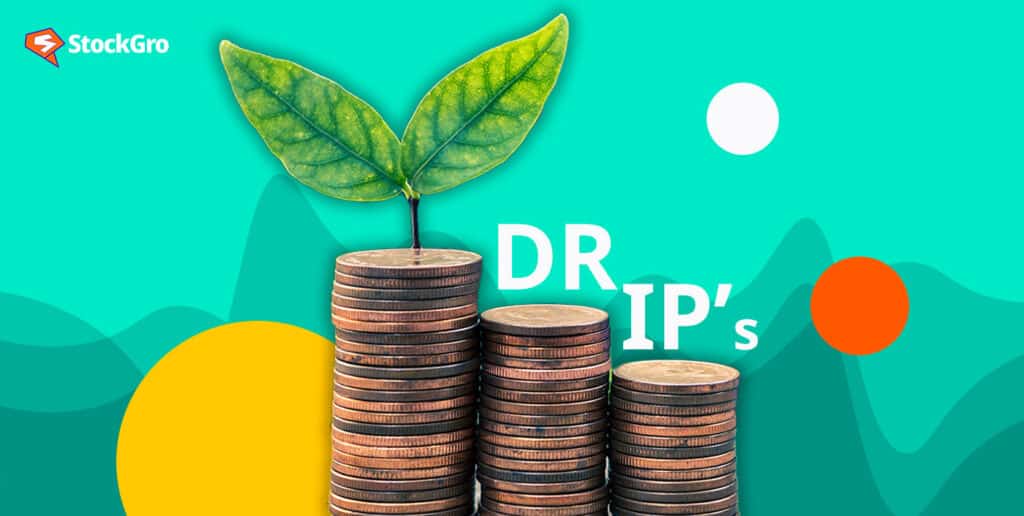
The Indian mutual fund industry has witnessed a growth in retail investor interest, with the value of assets held by retail investors increasing by 9.3% to reach Rs 23.4 lakh crore in January this year, according to data from the Association of Mutual Funds in India (AMFI).
Inflows in the mutual fund industry reached the highest level in three years, surpassing Rs 1.21 lakh crore in the first month of FY24.
Recent data indicates that mutual funds have become a popular investment avenue, with 31% of Indians investing in mutual funds, while only 10% are investing in shares as of 2022.
So, are you also ready to enter the world of mutual funds, right? But the big question looms – which type to choose? Fear not, we’re taking a deep dive into one of the options you encounter while investing in mutual funds – DRIPs!
You may also like: Tata Motors DVR Delisting: All you need to know about DVR shares
What are DRIPs?
Alright, let’s break it down. A DRIP is a Dividend Reinvestment Plan, and it’s the secret sauce behind making the most of your dividends. Instead of getting that cash in hand, you have two options:
- Set up a DRIP directly with the company – they’ll reinvest the dividends for you.
- Use your brokerage account to reinvest those juicy dividends.
When you own stocks, some companies reward you with dividends – a piece of their profits. Instead of pocketing those dividends, DRIP lets you use them to buy more shares.
Now, you might be wondering, “Why should I embrace DRIPs?” If you crave the dual benefits of lower risk and the power of compounding, DRIPs are tailor-made for you. Compared to ultra-growth funds, DRIPs offer lower-risk investments while harnessing the magic of compounding.
Also Read: Demystifying offer for sale (OFS): A wild ride for share prices!
How do DRIPs work?
You invest a certain amount in a mutual fund, and the fund declares a dividend. In a dividend payout plan, the fund’s net asset value (NAV) reduces by the dividend amount. But in a dividend reinvestment plan, the declared dividend is reinvested at the post-dividend NAV of the fund.
Here is a table on the rundown:
| Growth Plan | Dividend Plan | Dividend Reinvestment Plan | |
| As on January 1, 2022 | |||
| NAV (in Rs.) | 20 | 20 | 20 |
| Units purchased | 2500 | 2500 | 2500 |
| Total investment(in Rs.) | 50000 | 50000 | 50000 |
| As on December 31, 2022 | |||
| NAV (in Rs.) | 25 | 25 | 25 |
| Units purchased | 2500 | 2500 | 2500 |
| Total investment(in Rs.) | 62500 | 62500 | 62500 |
| Dividend declared on the date | Not Applicable | Rs 2 per unit | Rs 2 per unit |
| Dividend paid to unitholders | Not applicable | Rs 5000 | Not applicable |
| Dividend reinvestment amount | N.A. | N.A. | Rs, 5000 |
| Post dividend NAV (in Rs) | N.A. remains the same | 23 | 23 |
| Units issued for dividend reinvestment | N.A. | N.A. | 217.39 |
| No. of units post DRIP | N.A. | N.A. | 217.39 |
| Value of investment post dividend | Remains Rs 62,500 | Rs 57,500 | Rs 57,500 |
Benefits of DRIPs
Compounding Magic: DRIPs let you unleash the power of compounding. Those reinvested dividends buy more shares, which leads to more dividends, which buy even more shares… You get the drift!
No commission: DRIP lets you buy more shares without paying commissions or brokerage charges.
Discount rate: Some companies even offer sweet discounts of 1%–10% on the shares you buy through DRIP.
Drawbacks of DRIPs
Dilution Concerns: DRIPs can lead to dilution of your ownership stake as the company issues more shares.
Diversification Dilemma: DRIPs can lead to overexposure to a single company. Balance is the key to a well-rounded portfolio!
Patience Required: DRIPs require a bit of patience. You might not get additional shares until the dividends are paid, which can be yearly or semi-annually.
Lack of Control: When you use DRIPs, you don’t get to pick the share price. It’s automatic, and sometimes you might end up investing when prices are higher.
Also Read: Gold vs Equities- Which is the right investment option?
Is DRIP right for you?
DRIPs are an exciting way to automate your investing strategy, but like any ride, they come with their twists and turns. It’s essential to balance your long-term goals and short-term needs. So, hop on the DRIP coaster if you’re up for a long-term wealth creation adventure.

